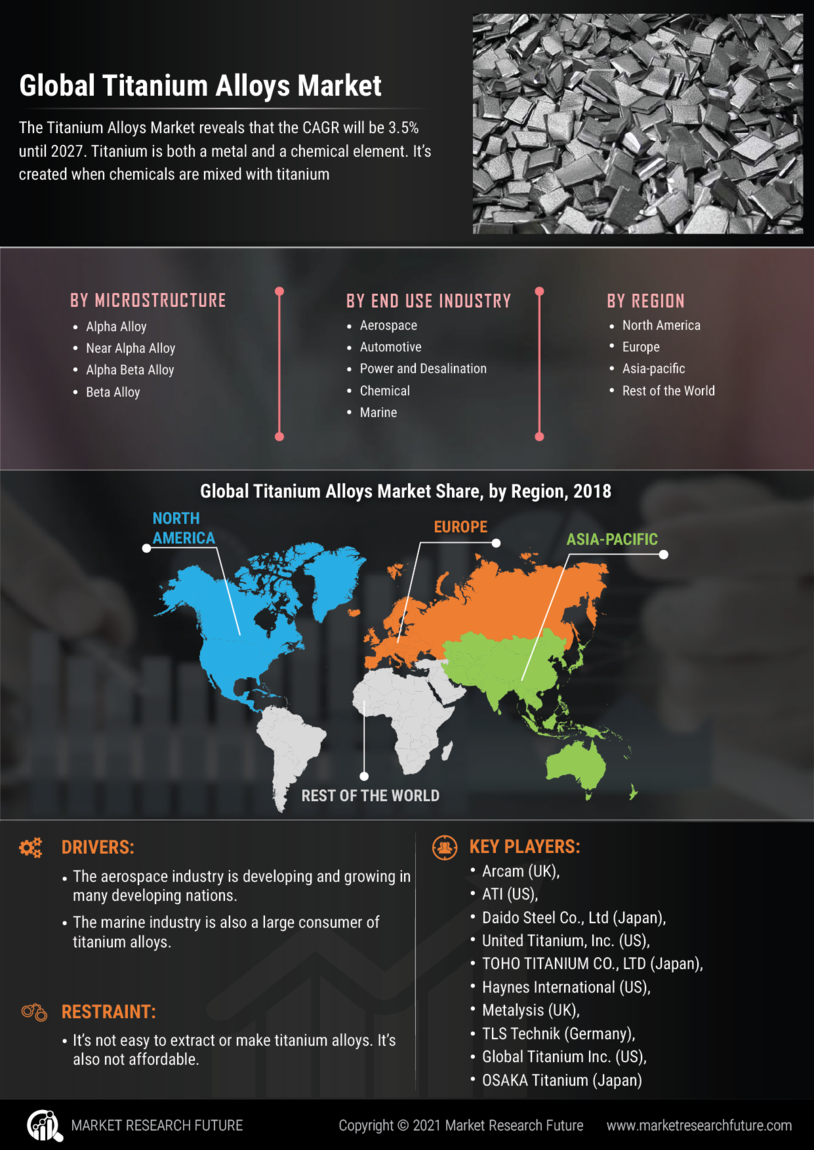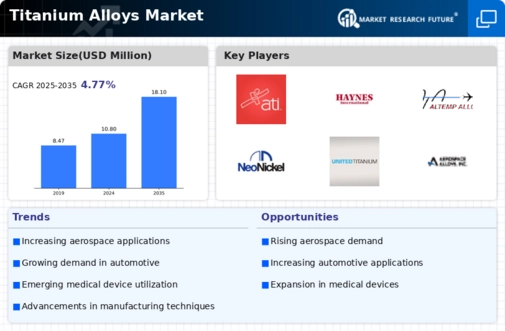Titanium Alloys Market Summary
As per Market Research Future Analysis, the Global Titanium Alloys Market was valued at USD 10853.82 million in 2024 and is projected to grow to USD 18125.14 million by 2035, with a CAGR of 4.77% from 2025 to 2035. The aerospace industry is a significant driver of this growth, particularly in developing nations, due to the increasing demand for lightweight and fuel-efficient aircraft. Additionally, the marine industry and automotive sectors are also contributing to the demand for titanium alloys, driven by the need for corrosion-resistant and high-strength materials. Key applications include aircraft components, automotive exhaust systems, and military equipment, highlighting the versatility of titanium alloys across various industries.
Key Market Trends & Highlights
The titanium alloys market is experiencing robust growth driven by multiple sectors.
- Aerospace & defense sectors are fueling market expansion, with increased defense agreements and satellite launches.
- The automotive industry is witnessing a surge in titanium alloy usage due to the rising demand for SUVs and lightweight vehicles.
- Technological advancements in manufacturing processes are enhancing product performance and cost efficiency.
- Alpha-Beta titanium alloys are projected to dominate market revenue due to their balance of strength and corrosion resistance.
Market Size & Forecast
| 2024 Market Size | USD 10853.82 million |
| 2035 Market Size | USD 18125.14 million |
| CAGR (2024-2035) | 4.77% |
Major Players
Key players include ATI Inc., Arconic Corporation, Nippon Steel Corp, Kobe Steel, Ltd, and Haynes International, Inc.






















Leave a Comment